Flow between plates with different temperatures
Case directory
$FOAM_TUTORIALS/heatTransfer/buoyantSimpleFoam/buoyantCavity
Summary
We calculate the flow between two plates with different temperatures. The hot plate is set to 34.6 °C (307.75 K) and the cold plate is set to 15 °C (288.15 K). The gravity acceleration is set to be in the negative direction on the Y-axis.
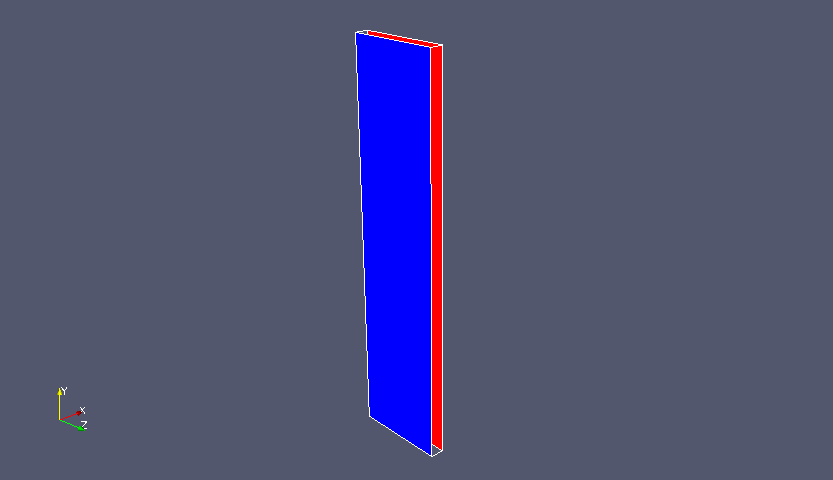 Model geometry (Hot side: red, Cold side: blue)
Model geometry (Hot side: red, Cold side: blue)
After the calculation, we will sample the values with the utility "postProcess". Sampling settings are specified in the file system/sample.
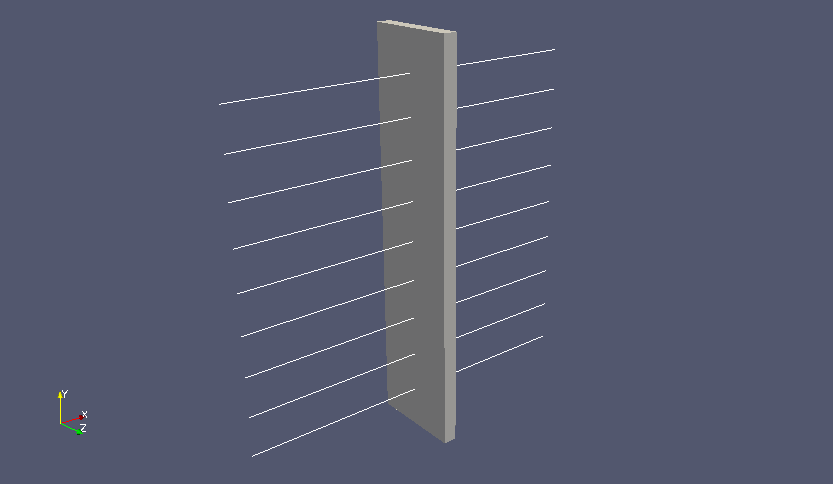 Sampling positions
Sampling positions
The magnitude and direction of the gravity acceleration is specified in the file constant/g as follows.
dimensions [0 1 -2 0 0 0 0]; value (0 -9.81 0);
The meshes are as follows, and the number of mesh is 78750.
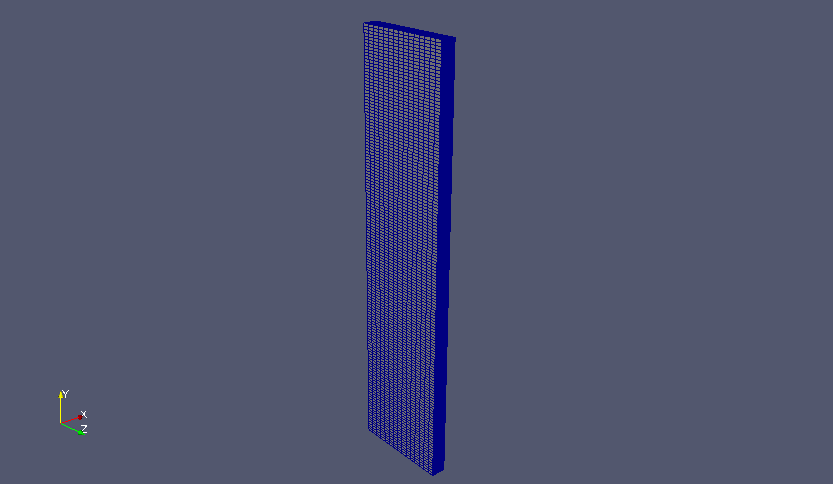 Meshes
Meshes
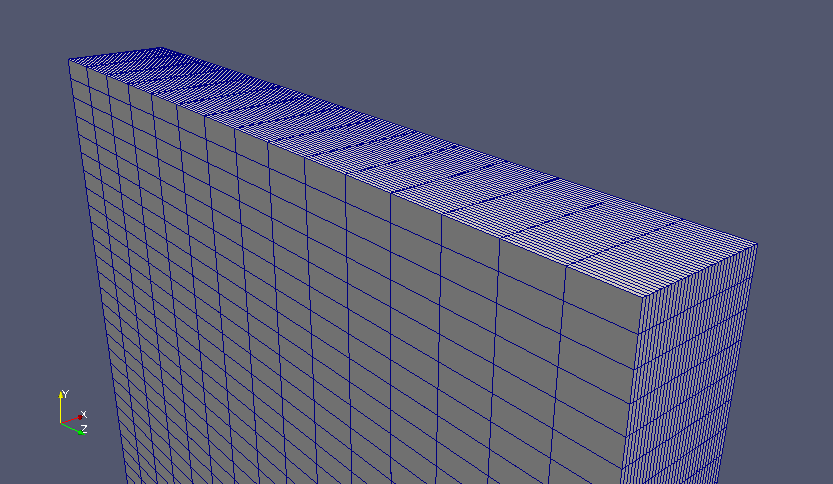 Zoomed meshes
Zoomed meshes
The calculation result is as follows.
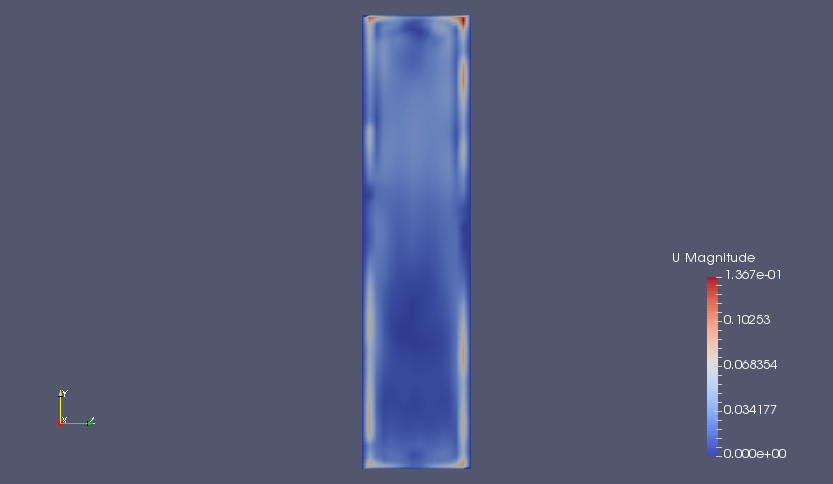 Flow velocity on YZ-plane (U)
Flow velocity on YZ-plane (U)
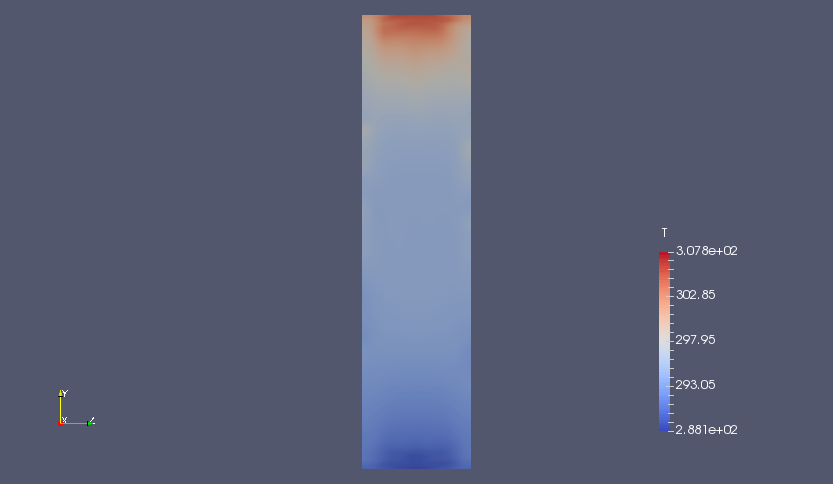 Temperature on YZ-plane (T)
Temperature on YZ-plane (T)
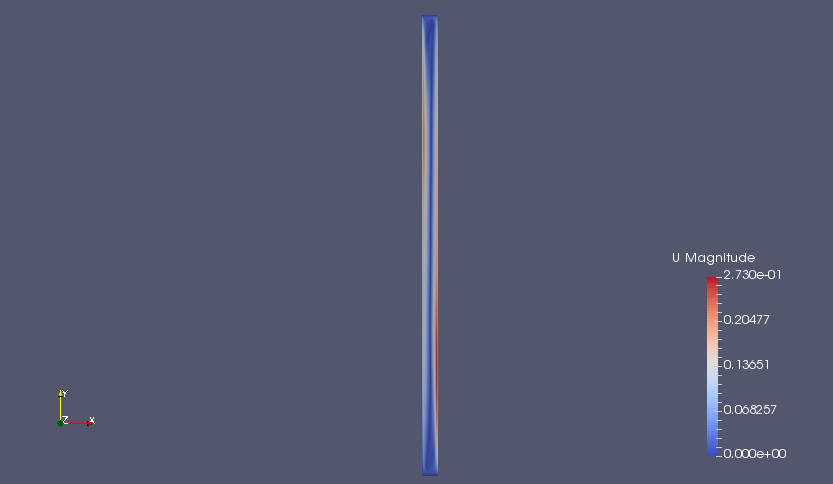 Flow velocity on XY-plane (U)
Flow velocity on XY-plane (U)
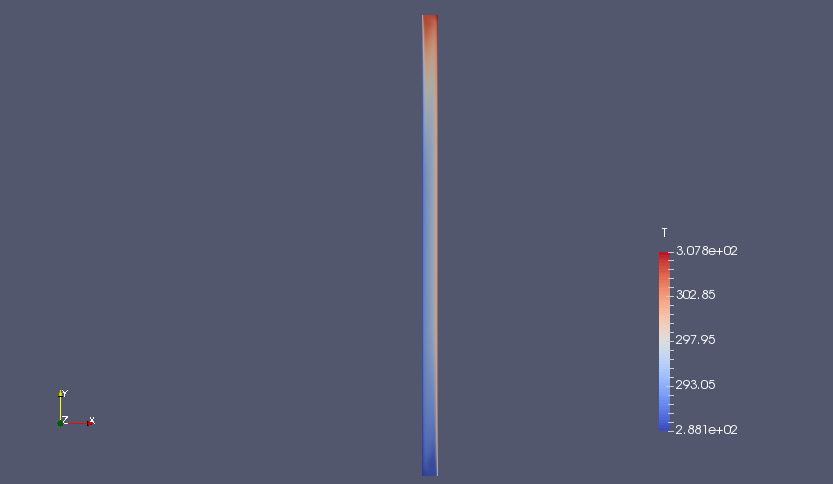 Temperature on XY-plane (T)
Temperature on XY-plane (T)
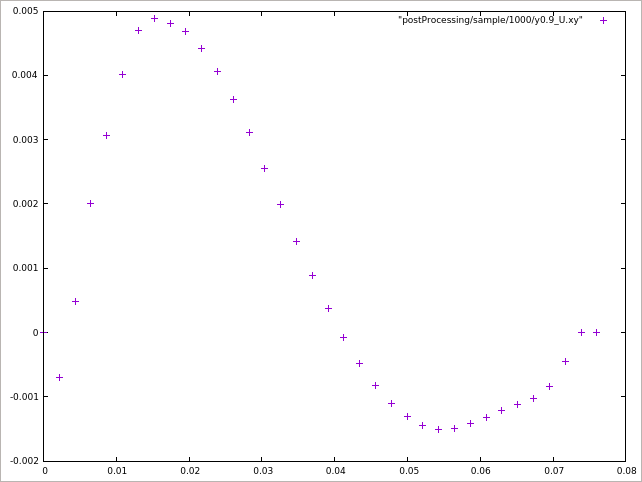 Sampled values of flow velocity (U) at y=1.962
Sampled values of flow velocity (U) at y=1.962
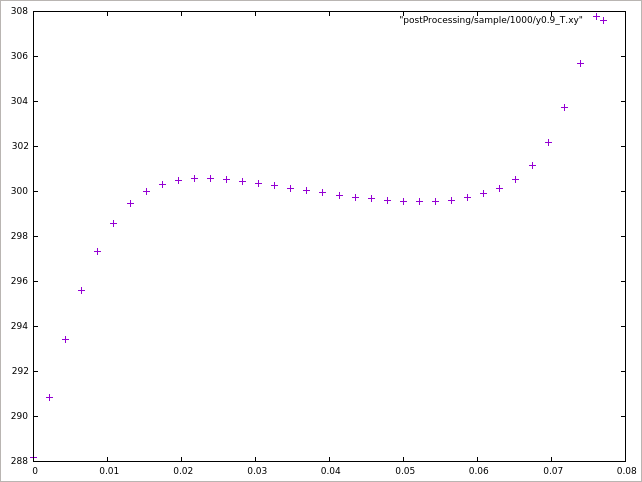 Sampled values of temperature (T) at y=1.962
Sampled values of temperature (T) at y=1.962
Commands
cd buoyantCavity
blockMesh
buoyantSimpleFoam
postProcess -latestTime -func sample
paraFoam
gnuplot
gnuplot>plot "postProcessing/sample/1000/y0.9_U.xy"
We sampled the values with the utility "postProcess".
Calculation time
5 minutes 6.86 seconds *Single, Inter(R) Core(TM) i7-2600 CPU @ 3.40GHz 3.40GHz